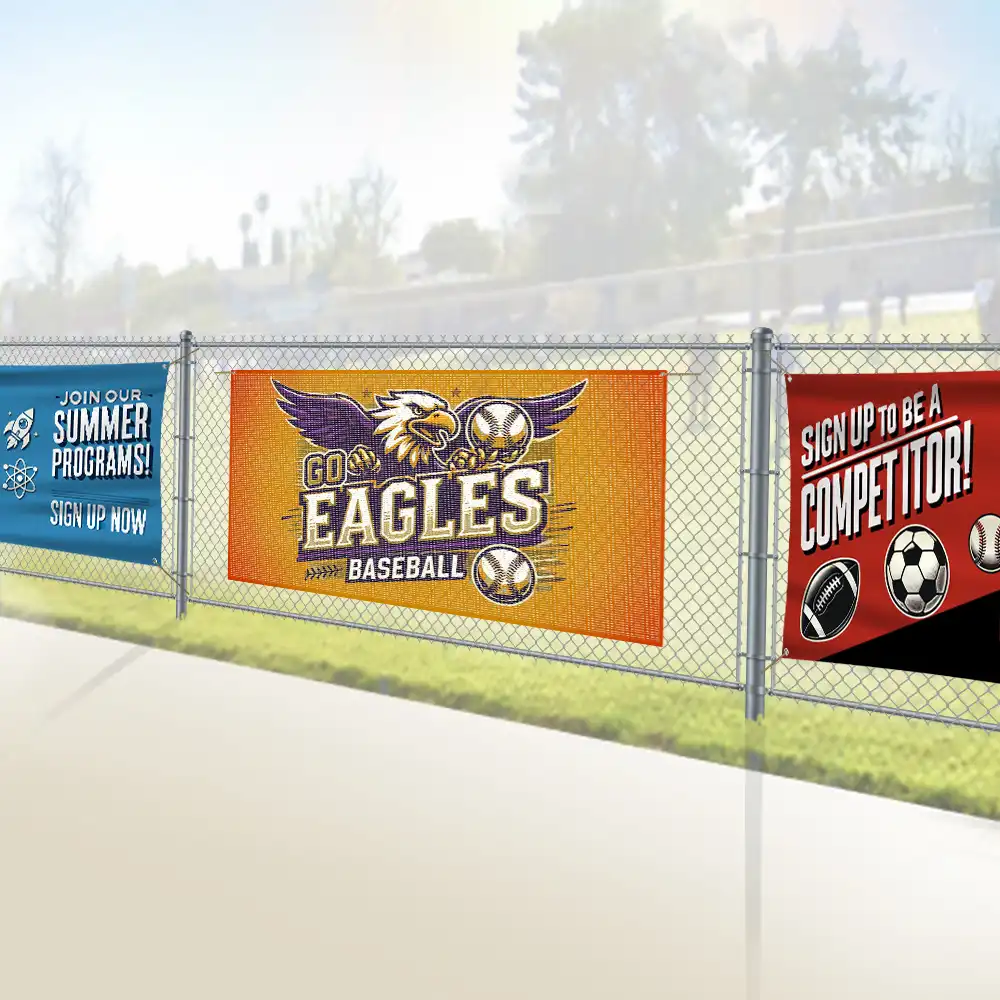When planning a community event, your signage does more than just provide information—it creates atmosphere, guides attendees, and reinforces your organization’s identity. As someone who has worked with numerous non-profit events, I’ve seen firsthand how the right banner can transform an event’s professional appearance while the wrong size can lead to missed opportunities.
Let’s explore how to select the perfect banner size for your next community gathering, fundraiser, or public event.
Understanding Standard Banner Sizes
Before diving into specific recommendations, it helps to understand the most common banner sizes and their typical applications:
Small Banners (2’×4′ to 3’×6′)
Best for: Information booths, registration tables, indoor displays, and directional signage
Typical placement: Tabletops, small wall spaces, or mounted on lightweight stands
Budget consideration: Most affordable option, starting at $40 for a 2’×4′ banner
Small banners work wonderfully as supporting signage throughout your event. They’re perfect for marking check-in areas, highlighting program schedules, or providing directions to different activity stations.
Medium Banners (3’×8′ to 4’×8′)
Best for: Stage backdrops, photo opportunities, sponsor recognition walls
Typical placement: Behind speakers, at entrance/exit points, or spanning booth backs
Budget consideration: Moderate investment, offering significant visual impact
Medium-sized banners serve as excellent focal points that still maintain portability. Many non-profits I’ve worked with use these sizes for their versatility—they’re substantial enough to command attention but can still be transported in a standard vehicle.
Large Banners (4’×10′ and larger)
Best for: Main event identification, building wraps, large outdoor venues
Typical placement: Entrance gateways, large walls, between poles or trees, across streets
Budget consideration: Higher investment but maximum visibility
Reserve large banners for situations where visibility from a distance is critical. These make the biggest impression but require more planning for installation and transportation.
Environmental Considerations
The setting of your event significantly influences the appropriate banner size:
Indoor Events
For indoor spaces with lower ceilings (like community centers or school gymnasiums), stick with smaller or medium banners that won’t overwhelm the space. Consider:
- Ceiling height and wall space availability
- Viewing distance in the room
- Existing visual elements that might compete for attention
Outdoor Events
Outdoor venues require larger banners that can be seen from greater distances and stand up to environmental factors:
- Consider wind exposure (larger banners catch more wind)
- Account for viewing distance across open spaces
- Plan for adequate lighting if the event extends into evening hours
Practical Tips From Experience
Having provided signage for numerous community events across Whatcom, Skagit, and Island Counties, I’ve gathered some practical insights:
- Measure your space before ordering. Take photos of the intended placement area with a reference object for scale.
- Consider portability needs. Will different volunteers be setting up? Choose sizes that are manageable for your team.
- Think about reusability. More general banners in standard sizes can be repurposed for multiple events, stretching your organization’s budget further.
- Balance your signage plan. Instead of one massive banner, consider a coordinated system of different sized banners that guide attendees through the entire event experience.
- Remember visibility hierarchy. Your main identification banner should be largest, with supporting informational banners in smaller sizes.
Real-World Application: Community Festival Case Study
A local community festival previously used only small tabletop banners throughout their event. Attendees frequently reported difficulty finding specific activity areas across the park setting.
By implementing a coordinated approach with:
- One large 4’×12′ main entrance banner
- Medium 3’×8′ banners for each major activity zone
- Small 2’×4′ directional banners at path intersections
The organization dramatically improved visitor experience while staying within budget by prioritizing placement and creating a clear hierarchy of information.
Need Help With Your Event Signage?
If you’re planning a community event and need guidance on creating effective signage that works within your organization’s budget, I’d be happy to help. As a Native-owned business focused on supporting non-profits and community organizations, Smoky Raven Creative offers both consultation and affordable printing services tailored to your needs.
Contact us to discuss your event signage needs, or explore our resources page for more tips on creating effective visual communications for your organization.
What community event are you planning? Share in the comments below, and I’ll offer some specific banner size recommendations for your unique situation!

